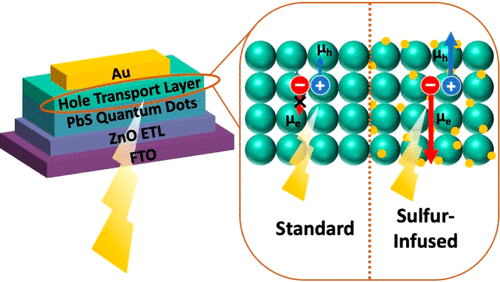New Hole Transport Materials for Colloidal Quantum Dot Solar Cells
Team: Nanoenergy Lab Hole Transport Materials Subgroup
Program:
Electrical and Computer Engineering
Project Description:
Lead Sulfide Colloidal Quantum Dots are an attractive material for solar cells because solar cells based on them are thin, flexible, lightweight, and can absorb efficiently in the infrared region of the sun’s light spectrum. These qualities are not present in the silicon solar cells that are most commonly in use today. However, they are limited in performance by poor charge transport in the Hole Transport Layer. We demonstrate that evaporating sulfur atoms onto the Hole Transport Layer (sulfur infusion) addresses the poor charge transport, and significantly improves overall solar cell efficiency.
Team Members
-
[foreach 357]
[if 397 not_equal=””][/if 397][395]
[/foreach 357]
Project Mentors, Sponsors, and Partners
Susanna M. Thon
Course Faculty
-
[foreach 429]
[if 433 not_equal=””][/if 433][431]
[/foreach 429]
Project Links
Additional Project Information
Project Photo

Project Photo Caption:
A depiction of our Lead Sulfide Colloidal Quantum Dot solar cell architecture with the Hole Transport Layer inset, showing improved charge transport with infused sulfur atoms. Figure taken with permission from https://doi.org/10.1021/acsenergylett.0c01586
Project Video
A video describing background, motivation, methods, and results of our sulfur-infusion technique for improving Hole Transport Layer charge transport in Lead Sulfide Colloidal Quantum Dot solar cells.


